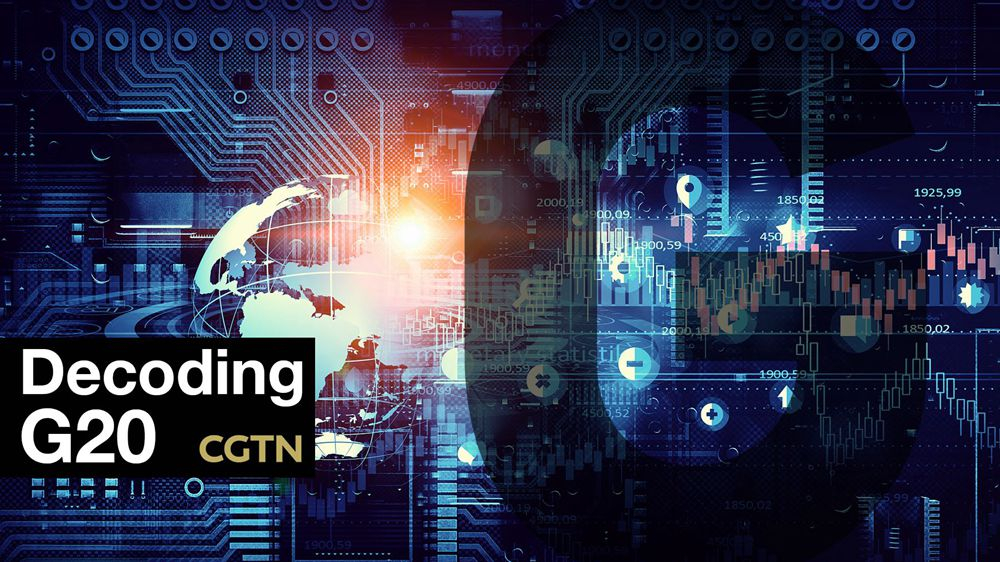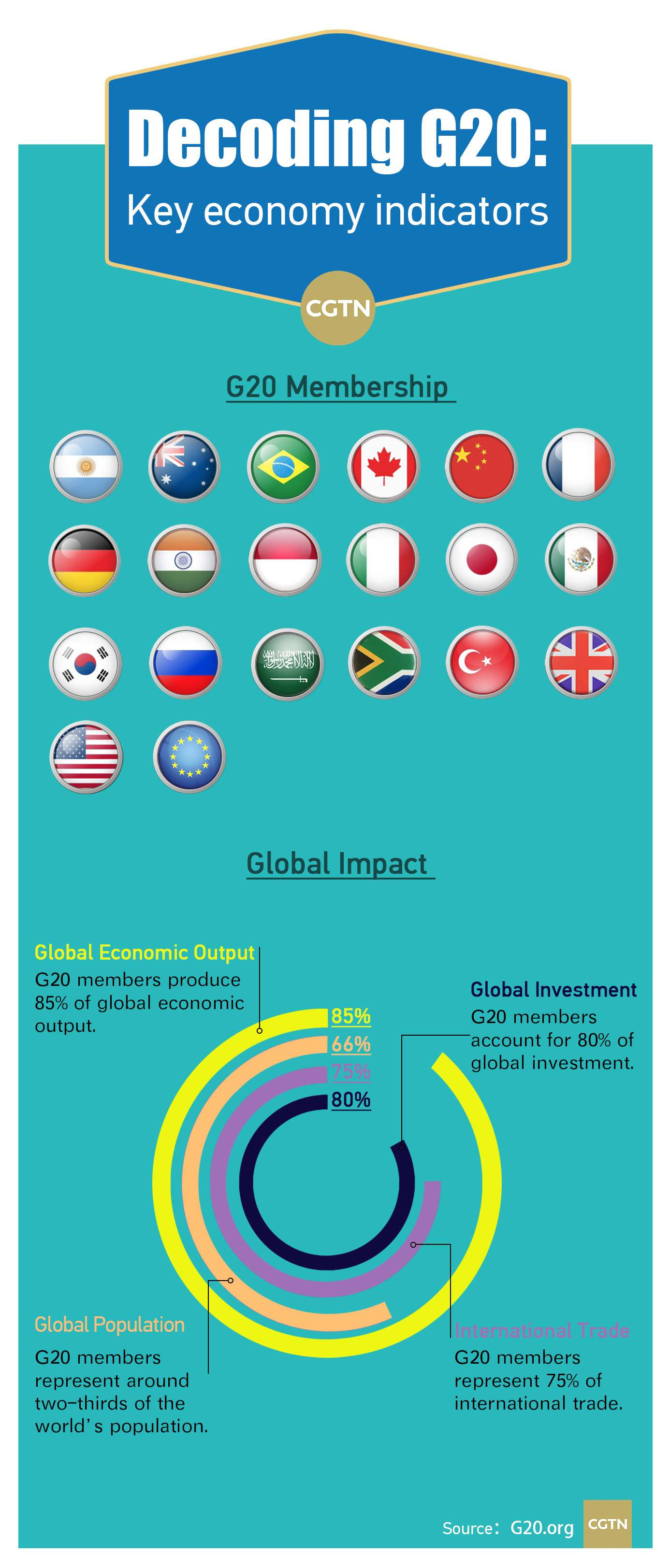
World
15:10, 29-Nov-2018
Decoding G20: What to expect from the bilateral meetings
Updated
14:53, 02-Dec-2018
By Yao Yao

Global leaders are expected to tackle escalating trade tension, rising protectionism and unilateralism at South America's first G20 summit in Buenos Aires.
Founded in September 1999, the Group of Twenty (G20) aims to discuss policies in relation to the promotion of international financial stability and witnessed its first Leaders Summit in 2008 when the global economy was hit by the worst financial crisis in more than 70 years.
Nowadays, the G20 summit is a meeting of the world's largest economies including the United States, the European Union and China, which represent 85 percent of global economic output, 80 percent of global investment, 75 percent of international trade and two-thirds of the world's population.

An infographic on the economic impact of G20 members. /CGTN Photo
An infographic on the economic impact of G20 members. /CGTN Photo
Besides the three priorities earmarked by Argentine President Mauricio Macri – the future of work, infrastructure and sustainable food security – the leaders will discuss the recent global trade tensions, climate change and gender equality issues.
It's reported that the global leaders will also talk about macroeconomic policy, the digital economy, the reform of the World Trade Organization, financial regulation and taxation.
While the heads of the world's 20 biggest economies discuss these important topics, the meetings between the leaders, especially some bilateral ones, will mean the summit will be closely watched.

Police officers install fences along an avenue ahead of the G20 summit in downtown Buenos Aires, November 28, 2018. /VCG Photo
Police officers install fences along an avenue ahead of the G20 summit in downtown Buenos Aires, November 28, 2018. /VCG Photo
The planned meeting between Chinese President Xi Jinping and U.S. President Donald Trump may be the most closely watched. This will be the first time the two leaders have met since the trade conflict between the world's two largest economies captured headlines a couple months ago.
Despite a much-anticipated swift end to the U.S.-China trade war, the "America First" and protectionism pursued by Donald Trump make the results of the meeting far from certain.
"The president said there is good possibility that we can make a deal and he is open to it," said Larry Kudlow, an economic adviser, who also admitted that if things don't work out in this meeting, Trump will invoke another 267 billion U.S. dollars in tariffs on China.
The Chinese side also has the worries. "Even if they are able to reach a small agreement, the leaders of China and the U.S. cannot reach a fundamental agreement, so there would not be a ceasefire in the trade war," said Shi Yinhong, head of the Center for American Studies at Renmin University of China.

A staff worker puts G20 posters onto a street light pole in Buenos Aires, Argentina, November 27, 2018. /VCG Photo
A staff worker puts G20 posters onto a street light pole in Buenos Aires, Argentina, November 27, 2018. /VCG Photo
Trump is also expected to meet with Russian President Vladimir Putin. The two leaders have not met face to face since a bilateral summit in Helsinki in July, which led to Trump critics accusing him of flattering the Kremlin.
At home, Trump is under investigation for alleged collusion with Moscow during the 2016 presidential election.
The two are expected to discuss the Intermediate-Range Nuclear Forces Treaty after Trump said in October the U.S. would quit the treaty because Russia was not honoring it.
However, things might be more difficult, because it's reported that Russia's recent seizure of Ukrainian vessels might lead to the cancel of Trump's talks with Putin.
There's also a possibility that Turkish President Recep Tayyip Erdogan may meet Saudi Arabian Crown Prince Mohammed bin Salman. In recent months, the killing of Saudi journalist Jamal Kashoggi in Istanbul has sparkled global outrage.
(This is one of CGTN's special series on the G20 summit which brings you insights about the premier forum for international economic cooperation.)
Also in the Decoding G20 series:

SITEMAP
Copyright © 2018 CGTN. Beijing ICP prepared NO.16065310-3
Copyright © 2018 CGTN. Beijing ICP prepared NO.16065310-3